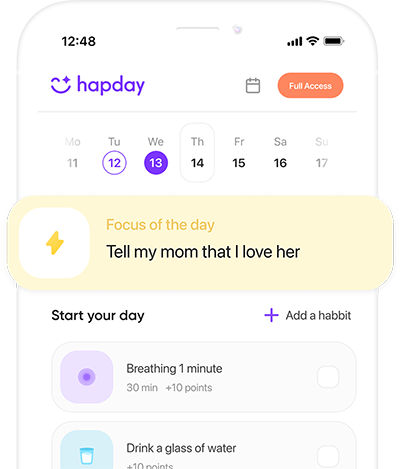Table of Contents
- Understanding PTSD and Its Impact
- The Role of Mindful Meditation in PTSD Healing
- Benefits of Mindful Meditation for PTSD
- Effective Mindful Meditation Techniques for PTSD
- Incorporating Mindful Meditation into Daily Life
- Conclusion
- References
Understanding PTSD and Its Impact
If you’re wondering what triggers PTSD, it’s quite simple—it often kicks in after witnessing or experiencing a traumatic event. The symptoms? Ah, they’re quite the handful: think flashbacks, nightmares, and anxiety that can sometimes feel like it’s off the charts. I’ve read somewhere (probably the National Institute of Mental Health—they seem to have a stat for everything!) that about 6.8% of people in the U.S. will deal with PTSD at some point. Those who serve in the military, first responders, and survivors of violence or natural calamities are particularly vulnerable.
This disorder is like a shadow that follows you everywhere, complicating relationships, making work a hurdle race, and increasing the risk of other mental health issues such as depression. What’s often overlooked is how it doesn’t just mess with your mind but throws your body out of whack too—cue increased stress hormones and possibly a change in neurological wiring. It’s like a cocktail of chaos that requires a comprehensive treatment setup, typically mixing therapy, meds, and self-help tactics like mindful meditation.
The Role of Mindful Meditation in PTSD Healing
Now, let’s chat about mindful meditation. It’s steeped in Buddhist roots, whispering to focus on the now, without passing judgment. This practice involves being aware of your thoughts and feelings—almost like being an observer of your own mind. A 2018 study I stumbled upon in JAMA evidences that mindfulness-based strategies can majorly ease PTSD symptoms. The secret sauce? It’s like teaching your brain to better regulate thoughts and emotions, sprouting acceptance and self-compassion.
Benefits of Mindful Meditation for PTSD
- Reduction in Stress and Anxiety: Mindfulness soothes with its magic wand, reducing stress-hormone levels like cortisol—buh-bye anxiety.
- Improved Emotional Regulation: Over time, this practice tunes up your brain’s ability to moderate emotions. Facing PTSD triggers becomes less of an emotional blitzkrieg.
- Enhanced Focus and Attention: You know how everything blurs together when you’re anxious? Meditation brings clarity, helping keep you anchored to the present moment.
- Better Sleep Quality: Sleep disturbances aren’t uncommon if you live with PTSD. Mindful meditation can act like a lullaby, calming the mind and reducing pesky thoughts.
Effective Mindful Meditation Techniques for PTSD
Breathing Meditation
Breathing meditation is all about focusing on your breath. Trust me, turn your attention to each breath and feel the calm wash over you.
How to Practice:
- Find a comfy spot, close your eyes.
- Inhale deeply, counting to four, then pause briefly.
- Exhale slowly, matching the inhale count.
- Do this for about 5 to 10 minutes, or until time itself feels… like it doesn’t exist.
Body Scan Meditation
Body scan offers a mental sweep from top to toe, noting sensations along the way. It’s like a goodwill tour through your own body.
How to Practice:
- Lie down comfortably, eyes closed if that works for you.
- Deep breaths in, then scan your body, part by part.
- Focus on each area, breathe into any tension, and let your muscles melt.
Loving-Kindness Meditation
Feel like giving some love—to yourself and others? Loving-kindness meditation (or Metta) does just that, overthrowing negativity.
How to Practice:
- Sit, shut those lids (your eyes!).
- Bestow kind thoughts on yourself first.
- Visualize expanding those thoughts to others, from friends to everyone around.
Mindful Walking
Walking meditation combines movement with mindfulness—the perfect solution for restless souls who find sitting a bit of a slog.
How to Practice:
- Pick a quiet corner.
- Tread slowly, be attentive to how your feet hit the ground.
- Concentrate on your stride and be conscious of the surrounding world.
Incorporating Mindful Meditation into Daily Life
Dipping your toes into mindful meditation waters might feel daunting. Begin with 5–10 minutes daily, upping the duration as you feel comfy. Make mindfulness part of everyday activities—you’re eating, walking, washing up? Be present. Resources abound, from apps to online guides, waiting to help you develop a regular practice habit. Little by little, you’ll notice the accruing benefits, feels like a mental—and emotional—renovation!
Conclusion
PTSD healing doesn’t follow a conveyor belt—it’s a unfolding journey. Mindful meditation stands as a steadfast friend, aiding in relaxation, emotional control, and fostering an anchor in the present moment. Want to start this healing process and weave these practices into your day-to-day rhythm? Consider tapping into Hapday for more insights.
Check out more ways to nurture your mind: Hapday.
References
- National Institute of Mental Health. (n.d.). Post-Traumatic Stress Disorder. Retrieved from National Institute of Mental Health website.
- JAMA Network. (2018). Mindfulness-Based Interventions for PTSD. Retrieved from JAMA Network’s publications.
- American Psychological Association. (2019). PTSD Prevalence and Statistics. Retrieved from American Psychological Association website.

